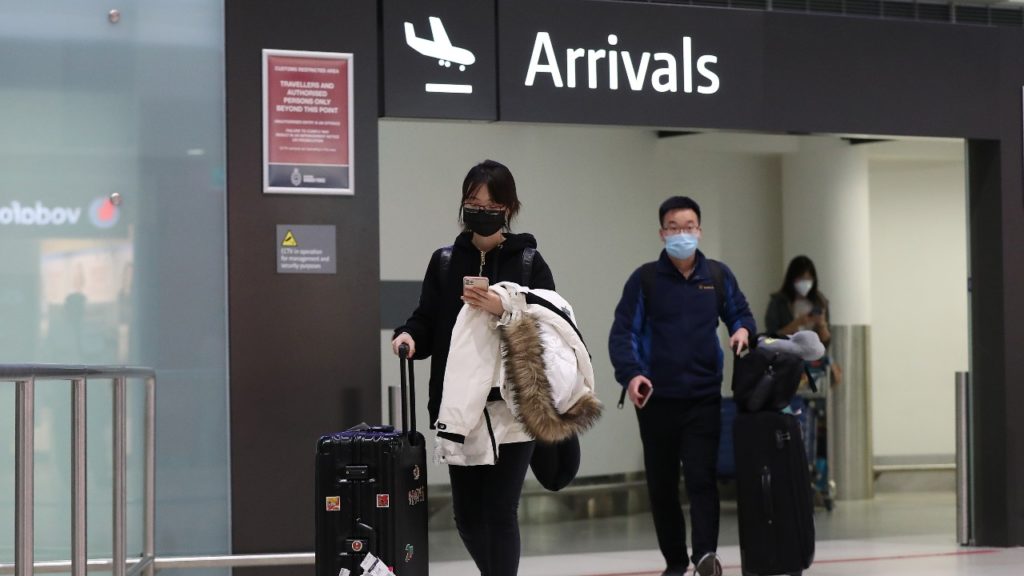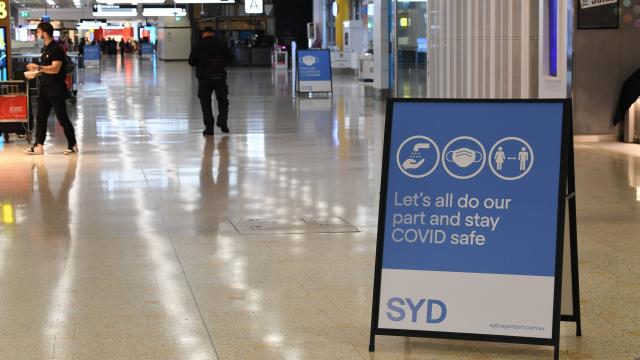COVID-19 is an ever-changing situation – and in recent weeks we’ve seen things shift again. The Omicron variant was recently marked as a ‘variant of concern’ by the World Health Organisation (WHO) and countries around the world have reacted, including Australia.
Here’s what we know about the situation so far.

What is the Omicron variant?
The Omicron variant (B.1.1.529) is a new evolution of the SARS-COV-2 virus, which we commonly refer to as COVID-19. Similar to the Alpha and Delta strains, it has been marked as a variant of concern and countries have been asked to take precautionary measures.
According to the WHO:
This variant has a large number of mutations, some of which are concerning. Preliminary evidence suggests an increased risk of reinfection with this variant, as compared to other VOCs.
Despite this, there’s still not a whole lot we know about the new variant and its severity. Though, initial signs do seem to indicate symptoms may be milder.
Omicron has since been detected in a number of countries at this point, including South Africa, Botswana, Hong Kong, Belgium, Germany, Italy, the Czech Republic, the UK and Australia.
Countries have introduced new border restrictions and quarantine requirements to try and manage the spread of the new variant.
What travel restrictions has Australia introduced because of Omicron?
On Sunday, November 28, Australia detected its first two cases of the Omicron variant in two overseas travellers who had been in Southern Africa. Both are fully vaccinated, asymptomatic and currently in isolation.
In anticipation of more Omicron cases, the Australian government has introduced a number of new restrictions for travellers, which include:
- Anyone who is not a citizen or permanent resident of Australia, or their immediate family, and who have been in African countries where the Omicron variant has been detected and spread – within the past 14 days – will not be able to enter Australia. The countries are South Africa, Namibia, Zimbabwe, Botswana, Lesotho, Eswatini, Seychelles, Malawi and Mozambique.
- Australian citizens and permanent residents, immediate family members including parents arriving from these countries will need to go into immediate supervised quarantine for 14 days subject to jurisdictional arrangements.
- Anyone who has already arrived in Australia and who has been in any of the nine countries within the past 14 days must immediately isolate themselves and get tested for COVID-19 and follow jurisdictional quarantine requirements which will include quarantine for 14 days from the time of departure from southern Africa.
New South Wales, the ACT and Victoria now require any incoming travellers from overseas countries to quarantine at their place of residence or accommodation for 72 hours, pending further health advice. This is regardless of whether you are vaccinated or which country you have travelled from.
Any person already in these states who has been in any of the high-risk countries outlined above in the past 14 days must immediately get tested and isolate for 14 days.
South Australia has also re-introduced the 14-day quarantine requirements for international travellers.
The federal government is continuing to monitor and make changes to these restrictions, so keep an eye on the health advice in case more countries are added to the list.
Have any other restrictions been introduced?
So far, no other restrictions or lockdown measures have been implemented in Australian states due to Omicron.
This doesn’t mean we can relax, though, and should continue with proper hand hygiene, wearing face masks, social distancing, checking in and getting vaccinated (if you haven’t already).
The Omicron situation is developing rapidly, so we’ll keep this post updated as we learn more.

Leave a Reply
You must be logged in to post a comment.